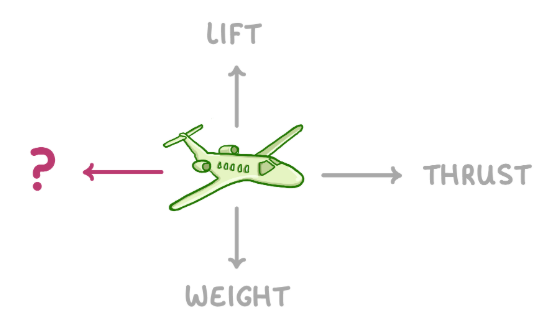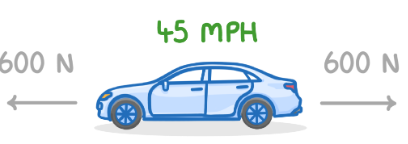Free Body Diagrams & Resultant Forces
1/7
There's no tags or description
Looks like no tags are added yet.
Name | Mastery | Learn | Test | Matching | Spaced |
|---|
No study sessions yet.
8 Terms

Which force is indicated by the red arrow in the diagram?
Air resistance
What does the length and direction if each arrow on a free body diagram indicate?
The length indicates the magnitude of the force
The direction indicates the direction of the force
What is a resultant force?
The overall force acting on an object

Using the free body diagram, what is the resultant force acting on the car?
0N because the forces acting on the car are equal
What does it mean for the forces acting on an object to be in equilibrium?
All the forces balance out

What is the resultant force acting on the car?
200N to the right

In terms of ‘acceleration’ and ‘direction’ (left or right), describe the car’s motion in the above diagram
The car is accelerating to the right

The car is travelling at 45 mph. Assuming the forces shown in the free body diagram remain constant, what will the car’s velocity be in 30 seconds time and why?
45 mph because both forces are 600N so the resultant force is 0, therefore the velocity will stay the same